From Anatolia to Appalachia
- Written by Admin TOA
- Published in Interesting Facts
Just like you would not be able to say that you have seen the true face of Anatolia without seeing Yozgat, Trabzon and Konya, you would not be able to say that you have experienced the US without seeing the states such as Tennessee.
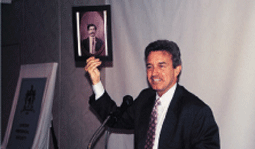
The town of Kingsport is at the corner of Kentucky, Virginia and Tennessee with a population of 40 thousand. According to the most recent census data, it appears as a 95 percent white American town, a part of the people who have been assimilated into the white Americans introduce themselves as Melungeons..
Many people, both in the US and Turkey might have heard bits and pieces of information about the Melungeons at different times. We are in Tennessee in order to see who Melungeons are and where they live.
Melungeons not only live in Tennessee but also in the region called the Appalachia that encompasses 13 of the US states. There are 75 thousand people who view themselves as Melungeon but their true numbers those who are descended from the original settlers are believed to be in millions.
But who are these Melungeons we talk about? How they came to the American continent and their roots are not known for sure. There are different theories about them. They are first mentioned in the history books in the year 1813 in Virginia. Melungeons, who generally refer to themselves as Portuguese, have become a mixed race with different marriages. The people who first met Melungeons have categorized them neither as white, black or native American. The townsfolk, when they wanted to scare their children supposedly said, “Behave or I’ll hand you over to the Melungeons.”
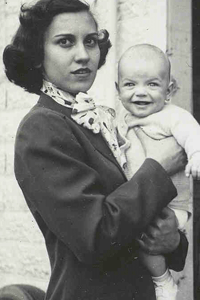
The roots of the Melungeons who are believed to be brought to the American continent by the Spanish sailors around 1500’s and to lie in Caucasia, the Mediterranean region and to Anatolia. In other words, they are people of a geography where the Ottoman Empire reigned. Of course, this is just one of the theories.
In Turkish, the meaning of the word Meluncan is “cursed life” and is pronounced the same as “Melungeon”.
It is very natural for those that were hauled to a far away continent in the second part of the 1500’s by force to think that they are indeed cursed. But it is also one of the assumptions that the name Melungeon comes from the French word “melange”. The word melange in French translates as mixed. When the root of the word Melungeon is researched in other languages, it carries the meaning of black or dark in Greek, and in African Portuguese (melungo or mulango) it carries the meaning of sailor.
THE OTTOMAN CONNECTION OF THE MELUNGEONS
It would be beneficial to give some historical information by winding the story back a bit. Prof. Dr. Brent Kennedy is the most known and the staunchest defenders of the Ottoman connection of the Melungeons. Prof. Kennedy, because of an illness that he could make no sense of and one that his doctors could not diagnose has become ill on 1988. He could not walk and he had difficulty making movements.
At a time when he said his farewells to his wife and children and awaited death, his doctor has diagnosed Brent with sarcoidosis. Later he was also diagnosed with familial Mediterranean fever. But that is where the oddities began. How could Brent, who up until that day was taught that his ancestors were from Ireland and England and nowhere else, develop a genetic disease that Mediterranean people were inclined to have?
The question that he used to ask his mother as a child of “How come my brother is dark skinned and my other relatives look more like eastern people rather than Irish or British people?” has started to weigh in more. He had DNA tests done and convinced people he knew on getting DNA tests. The results were surprising. The DNA results showed that their roots went as far as Azerbaijan, Lebanon, Palestine, Turkey, Yemen, Saudi Arabia, India and Eastern Africa. Native American results also showed up. The blood tests performed on 177 Melungeons showed that somehow at least some of them had diseases seen in people from the Mediterranean region such as sarcoidosis, thalassemia, and Behcet’s disease. The interest in Brent for Turks began IN 1988 with a disease adventure and for the first time in 1995, though people were telling him not to, he went to a trip to Turkey. And up until today, he HAS visited Turkey a total of 10 times.
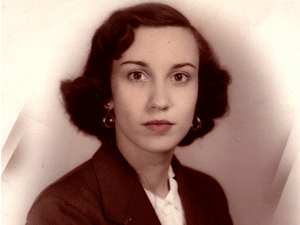
The things he saw in the Anatolian villages that he visited strengthened his idea that their roots came from Anatolia. Brent Kennedy, who has researched the Ottoman-Melungeon connection with “The Resurrection of a Proud People: The Melungeons” written in 1994 and reprinted in 1997 and “From Anatolia to Appalachia: A Turkish American Dialogue”, written in 2003, says that although he cannot prove his theories and ideas to a 100 percent, in his heart, he feels himself to be of Turkish descent. He also stresses that this descent does not prevent him from being related to other peoples as well, and that the kinship between all human being is underscored by the Melungeon story.
THE TURKISH SPOKEN BY THE NATIVE AMERICANS
Today, there is a committee in place that researches the roots of the Melungeons and of course, not everyone on this committee shares the same views as Brent. But Brent’s Turkey visit has strengthened the theory of Ottoman-Melungeon connection. Brent says, “Americans do not hug the people that they meet, they usually just shake hands. But the Melungeons do hug each other. This tradition is a characteristic that we kept alive throughout the years amongst our families.” Just as he mentioned, he also did hug us when we first met which was uncharacteristic of the behavior that we see in the US.
Of course this act alone is not an indication that the roots of the Melungeons spun form Anatolia. Brent Kennedy also draws attention to the language and last names used by the Native Americans living in the US. He points out that he Cherokees in their language refer to time as “saats”, mother as “ana-ta” and father as “atta”. These words resemble their Turkish counterparts. He also points out that another Native American tribe called the Creeks refer to their holy men as “Hadjo”. He says that it cannot be a coincidence that religious men are called “hoca” in Turkish. He also points out the names given by the Melungeons to their children such as Didima (Didim, a city of Aydın), Alania (Alanya, a city of Antalya) and Mahala. Brent also connects the Turkish influence of the Native Americans to the Ottomans that have arrived at 1500’s.
Brent Kennedy, also thinks that the similarity of the word “gaumy” commonly used by his mother and aunt in Appalachia to the Turkish word “gam” thought provoking. He also tries to make connections between the names of the different places in Appalachia to Turkish. He focuses on the possibility that the Niagara Waterfalls originate from “ne yaygara”, the state of Delaware from “dilhah yer” (beautiful land), Kentucky from “kan tok” and the name of Pamunkey, an area in Virginia where Native Americans live and which is known for its high quality cotton production from the words Pamuk-iye. Brent referring to the similarities in his book state: “I was very surprised when I watched the Anatolian folk dances. I saw that the dances had great similarities with the ones from Appalachia. There was no difference between the clothes of the Ottoman Sailors which I have seen in the Istanbul Sea Museum and the Cherokee chief, one of the Native American tribes.”
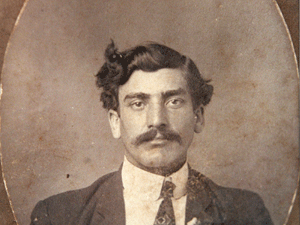
Another behavioral aspect used in Turkey also used amongst families in Appalachia draws Brent’s attention. He points out to the movement used in Turkish in order to convey the meaning of “no”, lifting the head up and making a “cıkk” sound, being also used by his own family members. He says, “When my mother wanted to say no to something, I remember her lifting her head and making ‘cıkk’, I have seen people do the same thing during my visit to Turkey”.
He also stresses that some Turkish connections may come from ancient migrations from central Asian of those people who would become known as Native Americans. DNA studies show the kinship between, for example, the Altai Turkic people and some Native Americans. As such, some words and customs could have come to the new world in this manner, long before the arrival of Ottomans as servants and slaves.
AMERICANS IN SEARCH OF THEIR ROOTS
Brent is actually an administrator in a hospital system, and our conversation on the history of Melungeons began in the hospital he works in. His office is decorated with the Turkish flag, rugs with Anatolian motifs, newspaper articles that he has appeared in Turkey and the different awards given to him by various organizations. We take a break in our meeting with a conference where he tells a group of Americans who Melungeons are. The conference regularly gives examples from Turkey, he makes us rise and he gives information to the people in the room information about the Turks.
It is most probable that even if you charge someone with the duty of introducing Turkey and pay them a hefty sum, you might not be able to get the same effect as Brent’s introduction. The audience in the room, usually people in their late middle ages listen to Brent attentively with both of his books in their hands. The fact that their roots stem from a place that they could not have guessed surprises them. After the meeting, they surround us for more information. Getting so much attention in Tennessee only because we are Turkish puzzles us. But the basis for this attention lie in what Brent says.
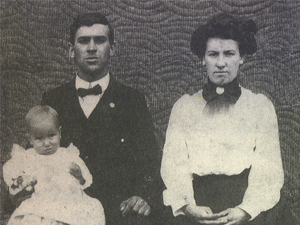
Brent does not only try to enlighten people in conferences or scientific meetings. He also tries to educate the waiter who serves us in the restaurant that Brent invited us to by asking him his last name and stating that he might have a Melungeon past. But, maybe because of his work load, the waiter does not want to spend much time on the whereabouts of his roots...Brent only smiles and indicates that his purpose is always to make people think about kinship to others.
FROM THE BATTLE OF LEPANTO TO THE CAROLINA COASTS
In the history books used in schools in the US, the history of the colonies originating from England begins in 1607 with them arriving in Jamestown, Virginia. This colony is followed by the second one that arrives in 1627 aboard the Mayflower ship. But the history books also talk about a third colony that arrived at the continent before these two but that their fate is unknown. It is a possibility that subjects of the Ottoman Empire at those dates were amongst this Lost Colony.
Brent Kennedy says that apart from the Portuguese that lived in Virginia and Carolina during the 16th century, there were also Turkish and Armenian people. Their names are easily found in early colonial records (Sayyan Turk, Mehmet The Turk, Joseph The Armenian, etc). The arrival of Ottoman people who marry each other and create a neighborhood is also another story. Brent says that there were around 100 Ottoman sailors amongst the crew of the ship left at the coast of North Carolina in 1586 by the British Sir Francis Drake, one of the most important sea captains in the world. That is why Brent does not mind being called by the name of Levend. How could these Ottoman sailors became part of the crew of Sir Francis Drake’s ship? It would be beneficial to look at the Ottoman archives in order to find the answer to this question.
After the defeat of the Ottoman Navy in1571 during the Battle of Lepanto in Mediterranean against the Venetian, Spanish, Maltese and Papal navies, approximately 10 thousand Ottoman naval officers were taken captive by the Spaniards. The Ottoman navy which has lost 260 of its 300 ships has met their first defeat on the Mediterranean. According to the research of David Beers Quinn, the editor of The Roanoke Voyages, The Turkish, Southern American and Portuguese natives that were held captive by the Spaniards were transferred as slaves to the ship of the British Captain Sir Francis Drake, who was on a trip to Southern America for another war at the time.
Sir Francis Drake, who wanted to use the captives against his enemies, the Spaniards, at the Caribbean and then wanted to place them in the colony that he was going to establish in Cuba met as a barrier natural causes. Captain Drake had to accost to the American coast instead of Cuba due to a storm. British soldiers, who longed to go back to their country awaited Captain Drake on the Roanoke Island, North Carolina coast. There was just one way to make room for the soldiers who were on the Roanoke Island at the Ralph Lane colony and that was to leave the slaves to their fate on the American continent.
According to the British archives, only 100 of the Ottoman slaves made it back to their land of origin between the years of 1586-87. Captain Drake seems to have freed some of the Ottomans on board in Cartagena (a coastal city in today’s Columbia), or in Santo Domingo. Some others had to stay on the American continent. They met with native tribes in order to stay alive and to procreate, they got married and afterwards they changed their religions in compliance to the dominant Anglo-Saxon British powers.
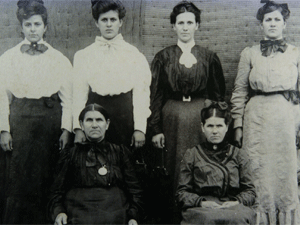
FAMOUS MELUNGEONS
As Brent indicates in his book, there exist famous people whose roots are tied to Melungeons. Elvis Presley and one of the American presidents Abraham Lincoln are such examples. Elvis Presley’s mother’s family has immigrated from North Carolina at the beginning of 1800’s. He points out that the last name of Presley’s great great grand mother Morning Dove White’s last name is widely used by the Melungeons, and was in the right place at the right time.
Brent, who has also conducted research on Elvis’s name, maintains that there are ties between the name Elvis and “Eulalia”, which means the month of July in Arabic, “Santa Eulalia”, which is a widely known antique church in Spain and “Elvas”, which is a town in Portugal. When you consider that the Melungeons have ties not only to the people living on Ottoman lands but also to Portugal and Spain, it is not a far fetched idea to include Elvis Presley in this chain.
Brent who according to his research maintains that the Turks are one of the nations that played a role in establishing the US, states that the Americans should know the fact that they not only have ties to Europe but also have Azeri, Cyprian, Tel Aviv and Istanbul cousins.
The research that Brent has begun also helped in strengthening the ties between Appalachia and Turkey. Hundreds of students from Appalachia have made pen pals from Turkey. University of Virginia’s College at Wise and Dumlupınar and İstanbul Universities have begun student exchange programs. The city of Cesme in İzmir and the town of Wise in Virginia became sister cities, and won an award from sister cities International. One of the main streets in Çeşme was named Wise.
During the earthquake of August 17, 1999, Melungeons in sending out the aid that they have collected to the victims of the earthquake shared the sorrow. Brent says that even though there are no modern family ties, he is happy to be related to Turks. And he adds: “We all came from a mother and a father and no matter what race or religion we are from, we are all human. Remember, if we look back only ten generations, each of us has 1024 ancestors. There is no such thing as racial purity – only kinship, whether we see it or not.”
WHAT DO THE EXPERTS SAY ABOUT THE OTTOMAN CONNECTION?
Brent Kennedy, in choosing as subject for his book the history of the Melungeons, conducted interviews with the experts on this issue. Here below are some views on the Melungeon-Ottoman connection from some of these experts:
Carrol H. Goyne (Researcher, Retired Air Force Soldier): “There were an undetermined number of Turks on the ship of the British Captain Sir Francis Drake, which came to the American continent on 1586. Some of these Turks went back to their countries but I do believe that some of them have a connection to the Melungeons who are on the American continent. I do not know for certain how this connection exists but I do believe that there were Turks amongst the colonies in Virginia during the 17th century.”
Joseph M. Scolnick (Prof. Political Sciences, University of Virginia’s College at Wise): "The Ottoman-Melungeon connection is still not a fact. There is a connection between these two groups but it is not as strong as the other stories that tell the tale of the Melungeons. I have no doubts that there is a connection between these two groups but there is no special ethnic root for the people that lived during the Ottoman era. The people who lived in Anatolia were of mixed ethnic origins. That is why, it would be false to look only for Turkish blood in the ancestry of the Melungeons. There also exist great physical differences amongst people you see on the street in Istanbul, Ankara and Izmir today. Most of the people I have seen resemble Southern Europeans. This is why the results of the DNA tests cannot be a determining factor for strengthening the ties to the Melungeons.”
MELUNGEON HERITAGE ASSOCIATION
The mission of the Melungeons Heritage Association (MHA), which was established to research the history and culture of the Melungeons, is also to inform the public about the secret past of the Melungeons who have been discriminated against and subdued for many years. Another main mission of the MHA is also to document and protect the culture and heritage of the people of Southern Appalachia (Melungeons) who have mixed ethnic roots. Seeing the ethnic and cultural dissimilarities of Melungeons who are made up of many different ethnic races, as an enriching gift and to maintain this structure.
The Melungeons, who annually get together, have conducted their fifth annual meeting in Kingsport, Tennessee during 17-19 of June this year. They tried to shed some light on to the history of the Melungeons with meeting to which many researchers, writers and historians have participated.
MHA BOARD OF DIRECTORS
Wayne Winkler (President), S.J. Arthur (Vice-President), Phyllis Morefield (Treasurer), Anthony Kirk (Secretary). Members: Jim Morefield, W. C. Collins, Brent Kennedy, Brenda Whittaker, James Nickens, Mattie Ruth Johnson, Audie Kennedy, Alisa Kennedy, Manuel Mira, Scott Collins, Bob Greene. Consultants: Bill Fields, Walter Davis, Dennis Maggard, Bob Gilmer, John Crowden.
FOR FURTHER INFORMATION ON MELUNGEONS
If you are interested by the story of the Melungeons, there are lots of books and research papers that you can read. In the official Melungeon site on the Internet (www.melungeon.org), it is possible to find announcements, researches and news about the Melungeons. If you want to learn more about the Ottoman-Melungeon connection it would be beneficial to read the two books written by Brent Kennedy. Kennedy says that a third book is on its way but he does not give a lot of details.
The first book that was published on 1997, signed by Brent Kennedy and Robyn Vaughan Kennedy; “The Melungeons: The Resurrection of a Proud People”, has for a long time been in need of a publisher in order to be printed. Many people disregarded Kennedy’s work for a long time but finally the Mercer University Press located in Georgia agreed to publish the book. Kennedy says that it is difficult make people accept book that aim to change historical facts. Kennedy’s second book with Joseph M. Scolnick “From Anatolia to Appalachia” is heavily dedicated on the Ottoman-Melungeon connection and in the book there are many interviews conducted with the experts on this issue. This book, first printed in November of 2003 is also published by Mercer University publications. The books may be obtained from amazon.com and they can also be ordered through the Melungeon Heritage Association.
(14th Issue Cover Melungeon – September 2004)
Latest from Admin TOA
- Fat Sal’s Italian Specialties Welcomes Customers in Bayville, NJ with a Renewed Concept
- FFD Wood LLC Delivers Custom Woodwork Solutions from Long Island
- A Tax Expert in the U.S. Tax World: An Interview with Samet Oynamıs
- Announcing the 2025 Edition of the 100 Most Influential Turkish Americans
- CEO Club New York Networking Night Stands Out with the Lamborghini Experience









